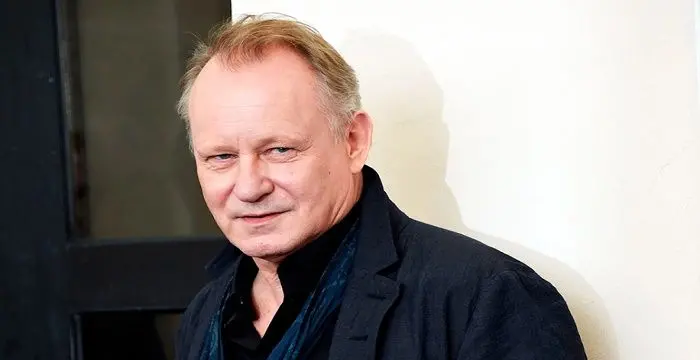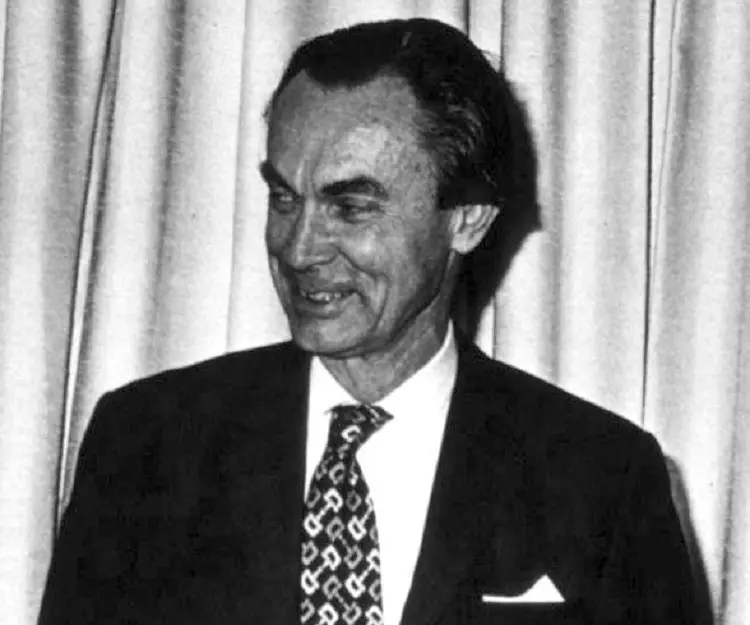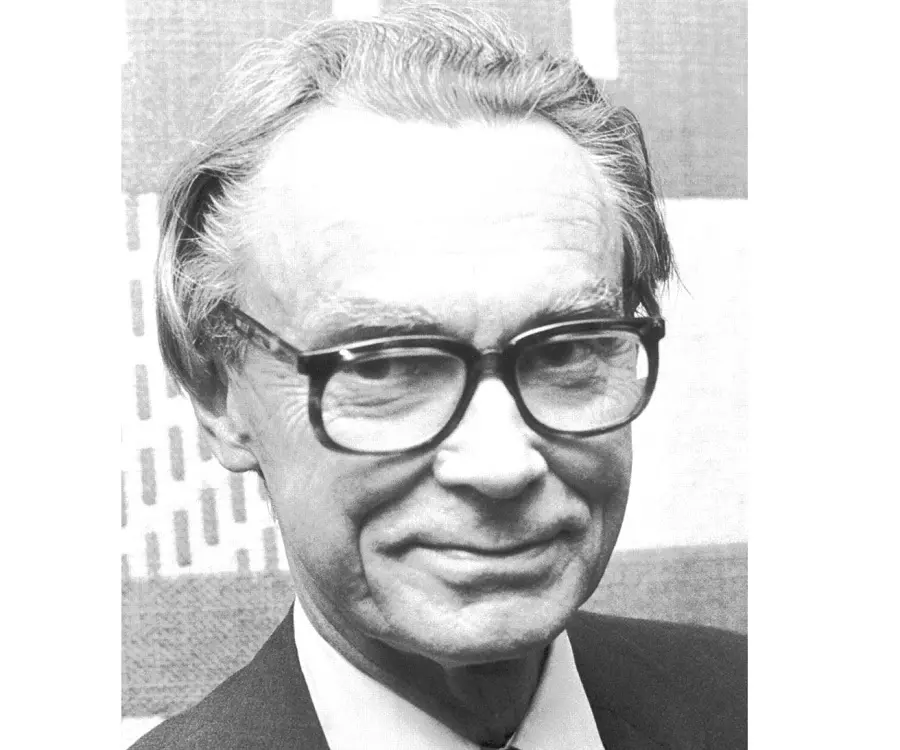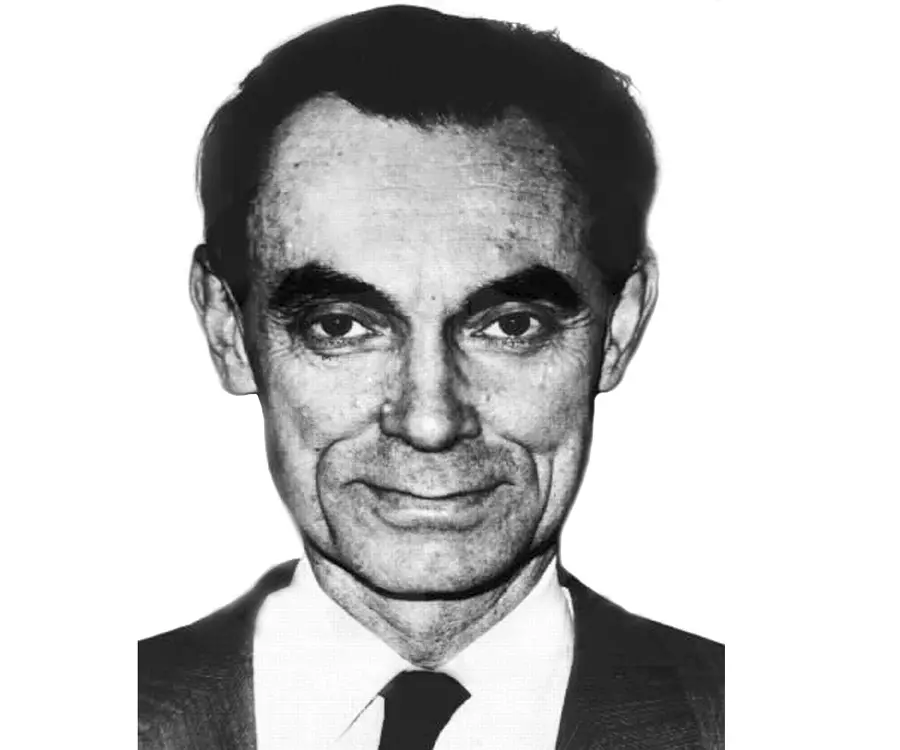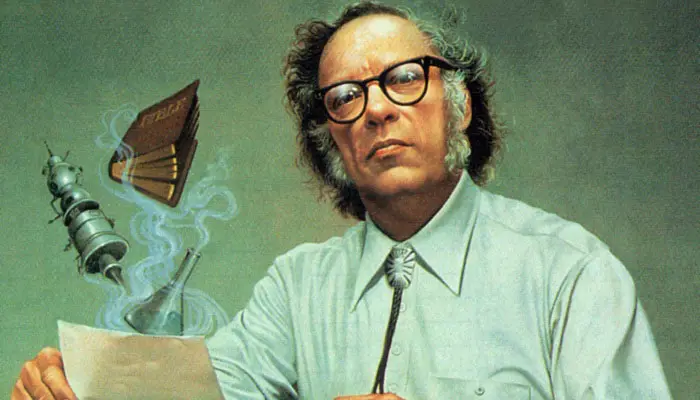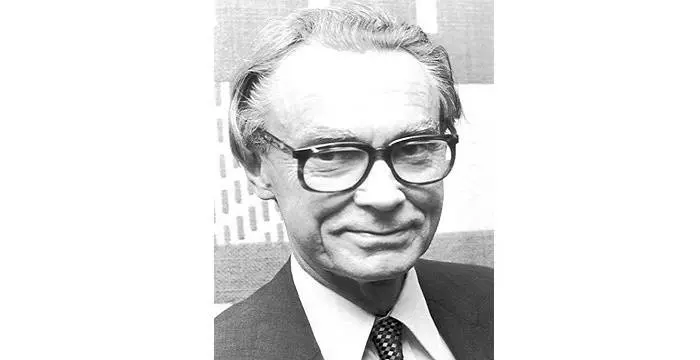
Sune Bergström - Swedish Men, Facts and Childhood
Sune Bergström's Personal Details
Sune Bergström was a Swedish biochemist who was one of the co-recipients of the 1982 Nobel Prize in Physiology or Medicine
| Information | Detail |
|---|---|
| Birthday | January 16, 1916 |
| Died on | August 15, 2004 |
| Nationality | Swedish |
| Famous | Scientists, Biochemists, Swedish Men |
| Childrens | Rurik Bergström, Svante Pääbo |
| Birth Place | Stockholm, Sweden |
| Gender | Male |
| Sun Sign | Capricorn |
| Born in | Stockholm, Sweden |
| Famous as | Biochemist |
| Died at Age | 88 |
// Famous Swedish Men
Bertil Gotthard Ohlin
Bertil Gotthard Ohlin was a famous Swedish economist. This biography profiles his childhood, family life & achievements.
Joel Kinnaman
Joel Kinnaman is an actor best known for appearing in the Swedish film ‘Easy Money.’ Check out this biography to know about his birthday, childhood, family life, achievements, and fun facts about him.
Stellan Skarsgård
Stellan Skarsgard is a Swedish actor known for his role in the flick ‘Breaking the Waves.’ Check out this biography to know about his birthday, childhood, family life, achievements and fun facts about him.
Sune Bergström's photo
Who is Sune Bergström?
Sune Bergström was a Swedish biochemist who was one of the co-recipients of the 1982 Nobel Prize in Physiology or Medicine; he won the award for his discoveries concerning prostaglandins and related substances. Bergström spent most of his working life researching on prostaglandin at Karolinska Institute. He was introduced to the topic by Ulf von Euler, who at that time was working on it. Impressed by Bergström’s work on lipoxygenase, Euler gave him some prostaglandin extracts to purify. However, he could not take up the work immediately because soon after the incident, he first went to Switzerland with a research fellowship and then joined University of Lund, where the infrastructure for research work needed to be rebuilt. Nonetheless, he soon gathered around him a team of young scientists and with them began his work on prostaglandin. Later, on getting a call from Karolinska Institute, he moved to Stockholm with his whole team and continued his research on prostaglandin. Subsequently, they not only identified six different prostaglandins, but also described their chemical structure. Later, he began to work on its clinical applications. The importance of his work was such that in spite of being the Chairman of the Board of Directors at the Nobel Foundation, he received the Nobel Prize in Physiology or Medicine along with Bengt I. Samuelsson and John R. Vane.
// Famous Biochemists
Robert Huber
Robert Huber is a German biochemist and Nobel Laureate. Check out this biography to know about his childhood, life, achievements, works & timeline.
Charles Best
Charles Best was a great scientist and a renowned physiologist who is remembered for being the co-discoverer of insulin. Read this biography to learn about his profile, childhood, life and timeline.
Isaac Asimov
Isaac Asimov was an American professor of biochemistry and a renowned author of science fiction and popular science books. Read this biography to know more about his life.
Childhood & Early Life
Karl Sune Detlof Bergström was born on January 10, 1916, in Stockholm, Sweden, to Sverker Bergström and his Wera (Wistrand) Bergström. He had two siblings; Edman and Folke Bergström.
In 1934, Bergström passed out from secondary school and joined Karolinska Institute, also known as the Royal Caroline Institute. There he started working as an assistant to biochemist Erik Jorpes, who at that time was researching on the clinical use of heparin.
Jorpes encouraged young Bergström to study the biochemistry of lipids and steroids. Impressed by his work, Jorpes arranged a one-year fellowship for him and with that he joined the University of London in 1938.
Here, Bergström started working on bile acids with Dr G.A.D. Haslewood at Hammersmith Postgraduate Medical School. Subsequently, he received a British Council fellowship to continue his work at Edinburgh. Unfortunately, his fellowship was cancelled with the onset of the World War II and he had to go back home.
Fortunately, in 1940, he received a two-year Swedish-American Fellowship and with that he went to the United States. In the first year, he worked in the University of Columbia in New York City as research fellow. Then in 1941, he moved to the Squibb Institute for Medical Research in New Jersey.
At Squib, Bergström started working on steroid cholesterol. He especially focused on its reaction when it was chemically combined with oxygen at room temperature. The process, known as auto-oxidation, remained the theme of his research even after he returned to Karolinska Institute.
On returning to the Karolinska Institute in 1942 at the completion of his fellowship period, he started working on auto-oxidation of linoleic acid. Subsequently, he found that an enzyme called lipoxygenase was essential for its oxidization. In 1944, Bergström received his M.D. and D. Med. Sci., Biochemistry from Karolinska Institute.
Career
In 1944, Bergström was made a Docent of Physiological Chemistry by Karolinska Institute. Subsequently, he began his career as an Assistant at the Biochemical Department at the same institute. Working with Hugo Theorell, he developed a purification process for lipoxygenase in 1945.
In October 1945, while attending a meeting of the Physiological Society at Karolinska, Bergström met Ulf von Euler, who was then working on prostaglandins, a lipid compound found in most animals, including humans. Impressed by his work on purification of lipoxygenase, Euler gave him some prostaglandins extracts for further purification.
Although he started working on it immediately he soon had to put the project on hold for quite a few years. First in 1946, he received another fellowship and left for Switzerland, working as a research fellow at the University of Basel for one year.
Then in 1947, Bergström came back to Sweden as the Professor of Physiological Chemistry at the University of Lund. Here his first task was to rebuild the research facilities, which had fallen into disuse. Once that was done, he started his research on prostaglandins.
By 1957, working with his doctoral student Bengt Samuelson and others, Bergström was able to isolate and purify two prostaglandins, named PGE and PGF. The study was first to describe the chemical structure of this lipid compound.
In 1958, Bergström joined Karolinska Institutet as Professor of Chemistry and with him the whole research team moved to Karolinska. By now, Dr Ragnar Ryhage had built mass spectrometer there. It played a decisive role in the work on prostaglandins.
By 1962, Bergström and his team had isolated six prostaglandins and established their structure. Later they established that these compounds are mainly formed from fatty acids and also identified function of each prostaglandin.
Meanwhile in 1963, Bergström became the Dean of the Medical Faculty at Karolinska and remained in the position till 1966. Then from 1969 to 1977, he was the Rector of the Institute.
Concurrently, he held many other important posts outside the institute. However, in spite of such administrative as well as academic responsibilities he remained equally keen on research work.
In later years, he began to work on the potential clinical applications of his research. It was soon discovered that prostaglandins protect tissues from the digestive juices of the body, control blood pressure, help to bring down body temperature and play important part in regulating fertility.
Bergström was especially interested in maternal health. He helped World Health Organization to initiate a project on it. He himself devoted a lot of energy in promoting such projects in India, where postpartum haemorrhage was a major cause of death.
Major Works
Bergström’s work on prostaglandins is undoubtedly his most important contribution. It was because of his work that prostaglandins are now being widely used in many medical conditions such as birth control, abortion, pain relief, and blood clots.
Although prostaglandins were first discovered by Ulf Von Euler, Bergström was first to establish that prostaglandins are groups of chemical compounds found almost in every tissue of animals, including the human beings. He was also first to identify number of these compounds and describe their chemical structures.
Once it was established that prostaglandins had many clinical applications he started working on its biosynthesizing process and collaborated with pharmaceutical companies for mass production of prostaglandins based drugs. He also helped WHO to use the drug for female health.
Awards & Achievements
In 1972, Bergström received the Gairdner Foundation International Award, which has now been renamed the Canada Gairdner International Award. Also in 1972, he received the Anders Jahre Medical Prize, Oslo.
In 1975, he co-received the Louisa Gross Horwitz Prize with his student and co-worker Bengt I. Samuelsson. In the same year, he was awarded The Francis Amory Prize by the American Academy of Arts and Sciences.
In 1977, he received the Albert Laser Basic Medical Research Award, New York and in 1980, the Robert A. Welch Award in Chemistry, Houston.
In 1982, Bergström received Nobel Prize in Physiology or Medicine for his “discoveries concerning prostaglandins and related biologically active substances". He shared the prize with Bengt I. Samuelsson, who worked with him on the same project and John R. Vane, who worked separately on the relation between prostaglandins and aspirins.
In 1975, he became the Chairman of the Board of Directors at the Nobel Foundation; in 1977, the Chairman of the WHO Global Advisory Committee on Medical Research, Geneva and in 1983 the President of the Royal Swedish Academy of Sciences.
Personal Life & Legacy
Bergström was officially married to Maj Nelly (nee Gernandt) Bergström. The couple had one son, Rurik Ernest Detlof Bergström, who later became an established businessman. Nelly died in 2007.
Bergström also had an extramarital relationship with Estonian chemist Karin Pääbo. They had a son, Svante Pääbo, born out of wedlock. His visited them on Sundays and his official family did not know anything about this liaison.
Svante Pääbo later grew up to be evolutionary geneticist and worked extensively on Neanderthal genome. However, father and son barely knew each other and Svante was mostly brought up by his mother.
Bergström died 15 August 2004 after a long illness in Stockholm. His two sons came to know about each other only after that.
Trivia
Initially it was doubtful if Bergström would ever receive the Nobel Prize although his work merited it. Since he was the Chairman of the Board of Directors at the Nobel Foundation nominating him for a prize would amount to conflict of interest. He ultimately received the honor because scientists later agreed that his work was too important to be ignored.
// Famous Scientists
Juliane Koepcke
Juliane Koepcke is a German-Peruvian biologist, who was the lone survivor among the 92 passengers and crew of the ill-fated LANSA Flight 508 that crashed in the Peruvian rainforest on 24 December 1971. Know more about her life in this biography.
Henry Cavendish
Henry Cavendish was a theoretical chemist and physicist, renowned for discovery of hydrogen and calculation of the mass of earth. To know more about his childhood, profile, timeline and career read on
Konstantin Tsiolkovsky
Konstantin Tsiolkovsky was a Russian rocket scientist and a pioneer of astronautics. This biography provides detailed information about his childhood, family, personal life, career, achievements, etc.
Sune Bergström's awards
| Year | Name | Award |
|---|---|---|
Other | ||
| 0 | 1982 - Nobel Prize in Physiology or Medicine | |
| 0 | 1975 - Louisa Gross Horwitz Prize | |
| 0 | 1972 - Gairdner Foundation International Award | |
| 0 | 1977 - Albert Lasker Award for Basic Medical Research | |
Sune Bergström biography timelines
- // 10th Jan 1916Karl Sune Detlof Bergström was born on January 10, 1916, in Stockholm, Sweden, to Sverker Bergström and his Wera (Wistrand) Bergström. He had two siblings; Edman and Folke Bergström.
- // 1934In 1934, Bergström passed out from secondary school and joined Karolinska Institute, also known as the Royal Caroline Institute. There he started working as an assistant to biochemist Erik Jorpes, who at that time was researching on the clinical use of heparin.
- // 1938Jorpes encouraged young Bergström to study the biochemistry of lipids and steroids. Impressed by his work, Jorpes arranged a one-year fellowship for him and with that he joined the University of London in 1938.
- // 1940 To 1941Fortunately, in 1940, he received a two-year Swedish-American Fellowship and with that he went to the United States. In the first year, he worked in the University of Columbia in New York City as research fellow. Then in 1941, he moved to the Squibb Institute for Medical Research in New Jersey.
- // 1942 To 1944On returning to the Karolinska Institute in 1942 at the completion of his fellowship period, he started working on auto-oxidation of linoleic acid. Subsequently, he found that an enzyme called lipoxygenase was essential for its oxidization. In 1944, Bergström received his M.D. and D. Med. Sci., Biochemistry from Karolinska Institute.
- // 1944 To 1945In 1944, Bergström was made a Docent of Physiological Chemistry by Karolinska Institute. Subsequently, he began his career as an Assistant at the Biochemical Department at the same institute. Working with Hugo Theorell, he developed a purification process for lipoxygenase in 1945.
- // Oct 1945In October 1945, while attending a meeting of the Physiological Society at Karolinska, Bergström met Ulf von Euler, who was then working on prostaglandins, a lipid compound found in most animals, including humans. Impressed by his work on purification of lipoxygenase, Euler gave him some prostaglandins extracts for further purification.
- // 1946Although he started working on it immediately he soon had to put the project on hold for quite a few years. First in 1946, he received another fellowship and left for Switzerland, working as a research fellow at the University of Basel for one year.
- // 1947Then in 1947, Bergström came back to Sweden as the Professor of Physiological Chemistry at the University of Lund. Here his first task was to rebuild the research facilities, which had fallen into disuse. Once that was done, he started his research on prostaglandins.
- // 1957By 1957, working with his doctoral student Bengt Samuelson and others, Bergström was able to isolate and purify two prostaglandins, named PGE and PGF. The study was first to describe the chemical structure of this lipid compound.
- // 1958In 1958, Bergström joined Karolinska Institutet as Professor of Chemistry and with him the whole research team moved to Karolinska. By now, Dr Ragnar Ryhage had built mass spectrometer there. It played a decisive role in the work on prostaglandins.
- // 1962By 1962, Bergström and his team had isolated six prostaglandins and established their structure. Later they established that these compounds are mainly formed from fatty acids and also identified function of each prostaglandin.
- // 1972In 1972, Bergström received the Gairdner Foundation International Award, which has now been renamed the Canada Gairdner International Award. Also in 1972, he received the Anders Jahre Medical Prize, Oslo.
- // 1975In 1975, he co-received the Louisa Gross Horwitz Prize with his student and co-worker Bengt I. Samuelsson. In the same year, he was awarded The Francis Amory Prize by the American Academy of Arts and Sciences.
- // 1977 To 1980In 1977, he received the Albert Laser Basic Medical Research Award, New York and in 1980, the Robert A. Welch Award in Chemistry, Houston.
- // 1982In 1982, Bergström received Nobel Prize in Physiology or Medicine for his “discoveries concerning prostaglandins and related biologically active substances". He shared the prize with Bengt I. Samuelsson, who worked with him on the same project and John R. Vane, who worked separately on the relation between prostaglandins and aspirins.
- // 15th Aug 2004Bergström died 15 August 2004 after a long illness in Stockholm. His two sons came to know about each other only after that.
- // 2007Bergström was officially married to Maj Nelly (nee Gernandt) Bergström. The couple had one son, Rurik Ernest Detlof Bergström, who later became an established businessman. Nelly died in 2007.
// Famous Capricorn Celebrities peoples
Weston Koury
All about American social media star Weston Koury, including his age, family life, girlfriends, birthday, and some fun facts.
Elin Nordegren
Elin Nordegren is the ex-wife of Tiger Woods. Check out this biography to know about her childhood, family life, achievements and fun facts about her life.
ItsJustNick
ItsJustNick is a Canadian YouTube star & social media personality. Let’s take a look at his family and personal life including age, date of birth, net worth, girlfriends, and fun facts.
Rudan Custodio
Check out all that you wanted to know about Rudan Custodio, the famous American YouTube Personality; his birthday, his family and personal life, his girlfriends, fun trivia facts and more.
Zahara Jolie-Pitt
Zahara Jolie-Pitt is the adopted daughter of former celebrity couple Angelina Jolie and Brad Pitt. Check out this biography to know about her childhood, family life and fun facts about her.
Adam Dahlberg
Check out all that you wanted to know about Adam Dahlberg, the famous YouTuber and gamer; his birthday, his family and personal life, his wife, fun trivia facts and more.
Sune Bergström's FAQ
What is Sune Bergström birthday?
Sune Bergström was born at 1916-01-16
When was Sune Bergström died?
Sune Bergström was died at 2004-08-15
Which age was Sune Bergström died?
Sune Bergström was died at age 88
Where is Sune Bergström's birth place?
Sune Bergström was born in Stockholm, Sweden
What is Sune Bergström nationalities?
Sune Bergström's nationalities is Swedish
Who is Sune Bergström childrens?
Sune Bergström's childrens is Rurik Bergström, Svante Pääbo
What is Sune Bergström's sun sign?
Sune Bergström is Capricorn
How famous is Sune Bergström?
Sune Bergström is famouse as Biochemist


